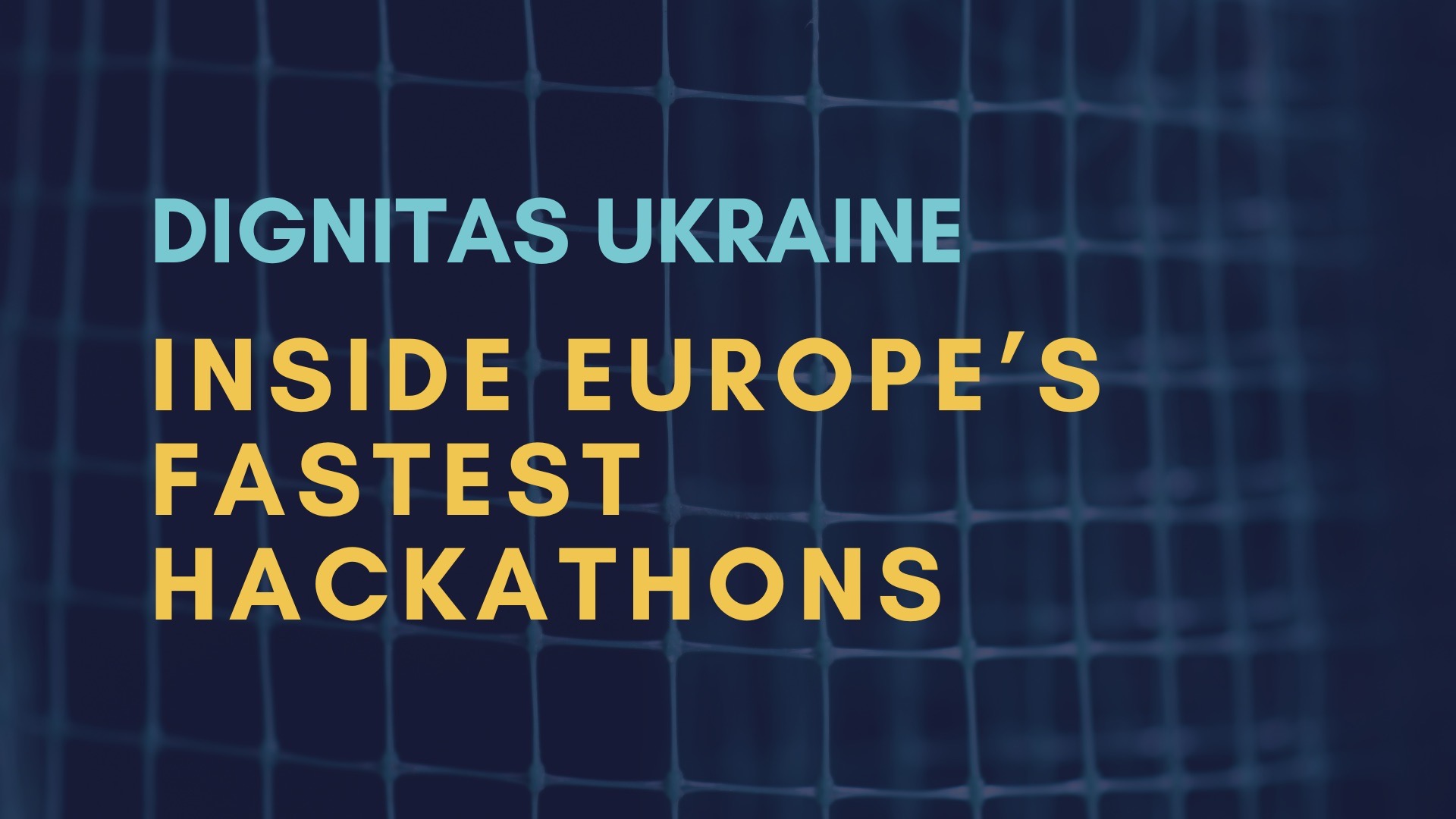Inside Ukraine’s Defense-Tech Hackathons
If you follow us on social media, you’ve probably noticed that Dignitas Ukraine doesn’t just deliver drones or run training programs – we’re deeply involved in the global defense-tech community. And one of the most dynamic corners of that world is hackathons.
Not typical college coding marathons
Defense-tech hackathons feel more like controlled explosions of talent and urgency: rooms packed with engineers, designers, analysts, roboticists, volunteers, and military advisors – all building real, testable solutions that could save lives on the battlefield.
What makes hackathons unique is their speed. In just a few days, people with completely different skill sets unite to turn raw ideas into functioning prototypes. Some teams solve only part of a massive problem; others build gadgets that can be tested immediately. And along the way, companies and organizations discover talented innovators who may later join their teams or collaborate on new tech projects.
This month, Dignitas Ukraine volunteer Pavlo Horyachev – an instructor, engineering expert, and long-time member of our team – took part in two major hackathons back-to-back: first in Kyiv, then in Berlin. The two events couldn’t have been more different, and together they revealed something important about how rapidly defense innovation is evolving.
At the same time, another hackathon was held in Paris, where our instructor and pilot, Oleksandr Korzh, led highly popular Anti-Shahed workshops. He also joined the Berlin event, advising teams and supporting their projects.
Hackathon #1: Kyiv
In Kyiv, most of the participants were Ukrainian teams – nearly 50 of them made it all the way to final presentations. Workshops covered everything from intercepting Shaheds to software-defined radio (SDR).
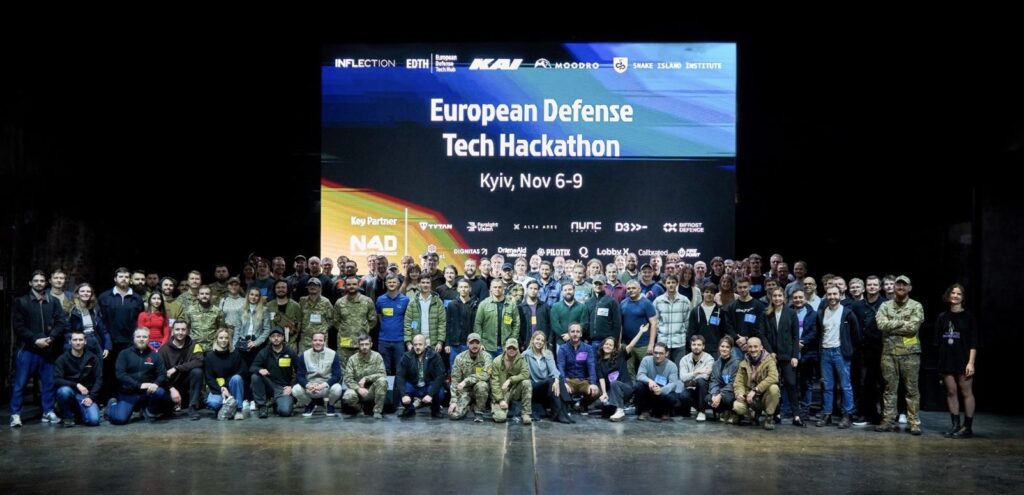
The mentors included soldiers from Ukraine’s 3rd Assault Brigade and volunteers from Dignitas Ukraine. Their advice was blunt but essential: what works in theory doesn’t always work on the front line. They explained which solutions would hold up under real combat conditions – and which ones would fail.
This direct connection to the battlefield shaped the ideas dramatically. Ukrainian teams came with insights, data, and experience that simply cannot be simulated elsewhere.

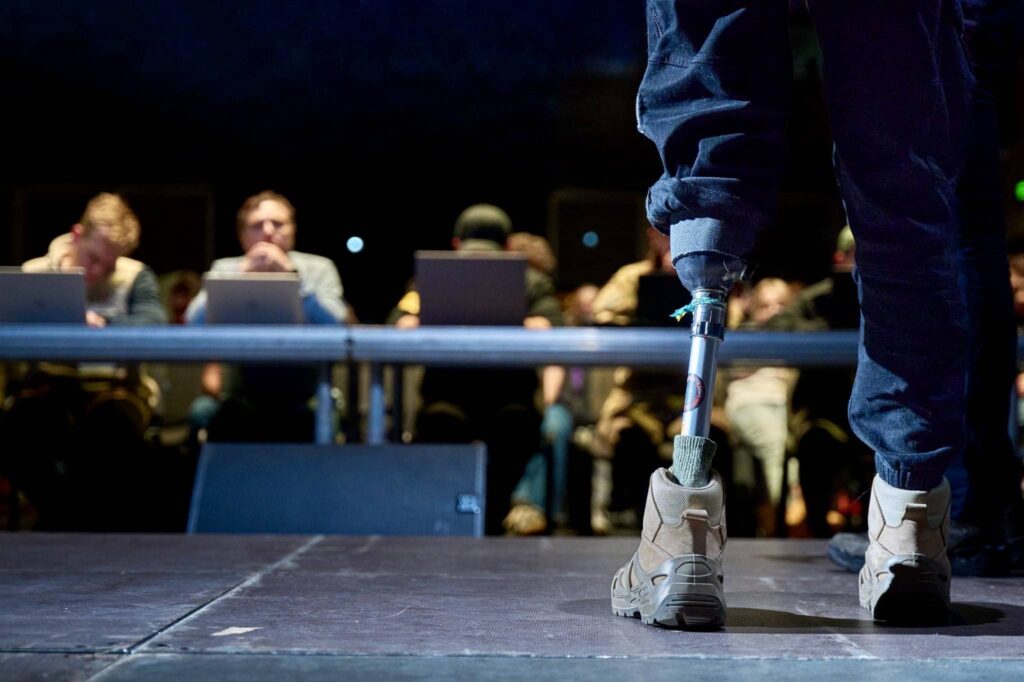
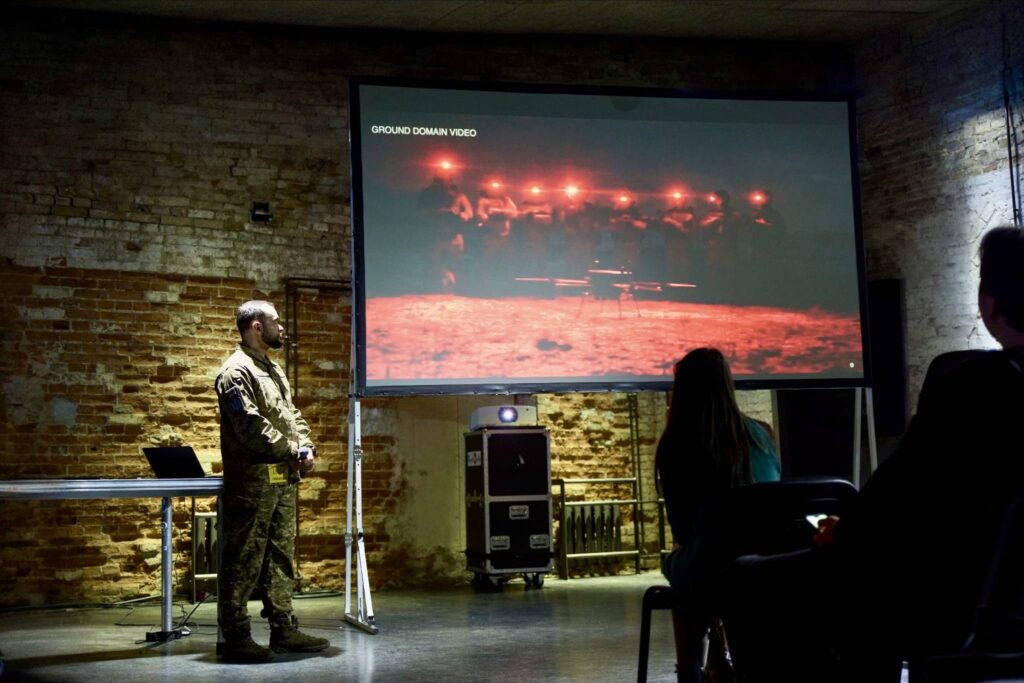
Hackathon #2: Berlin
Then came Europe’s largest defense-tech hackathon in Berlin: four intense days, 350+ participants, 65 teams, and an atmosphere that felt like a cross between a startup accelerator and an engineering boot camp.

The diversity of projects was striking.
Some teams reinvented єППО (EPPO) – a Ukrainian mobile app designed to strengthen air defense using observations from civilian users.
Eight teams created acoustic sensors to detect drones – some building from scratch, others improving existing concepts.
What stood out most was the Ukrainian presence. Nearly half the teams had at least one Ukrainian member; others were entirely Ukrainian. All of them maintained direct communication with frontline units, constantly checking their ideas against real-world needs. That’s why their solutions were the most advanced and practical.

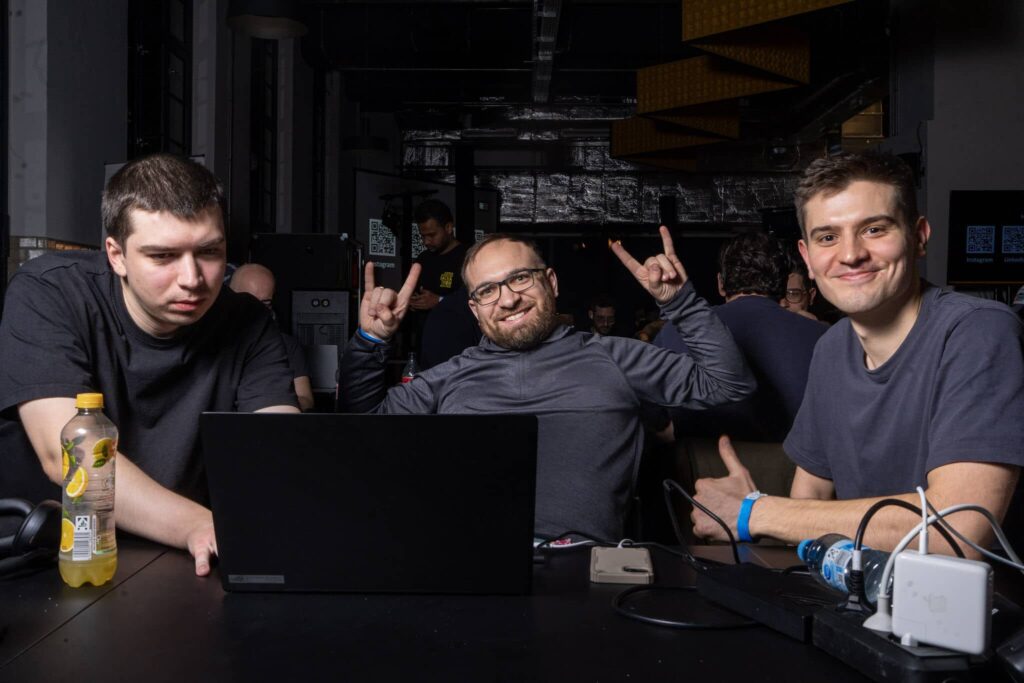
“We Want to Learn From Ukrainians”
An interesting conversation sparked with several German officers at the Berlin hackathon. They openly admitted that they want to learn from Ukrainian instructors.
“Ukrainian trainers have the only truly modern-war experience available today. No other army can offer this level of knowledge. And without this kind of training, our chances of surviving real combat are very low,” the officers said.
But at the same time, they doubted their own leadership would support such cooperation or move quickly enough to make it happen.
Hackathon #3: Paris
In parallel with the Kyiv event, a major defense-tech hackathon was held in Paris – the European Defense Tech Hackathon. The 2025 edition brought together over 120 participants from across Europe and beyond, forming 19 teams to tackle real-world military challenges such as swarm communication, threat detection, and autonomous mission execution.

One of the top teams, “SandFox Hacking Team,” developed a mesh-communication platform aimed at ensuring resilient battlefield networking under contested conditions.
Another strong contender, “Rhino Dynamics,” built a modular automatic turret designed to counter FPV drones – a threat that’s become significant in modern conflicts.
The hackathon’s challenges were not hypothetical: all tasks were sourced from real needs provided by frontline partners in Ukraine, NATO, and across the EU.
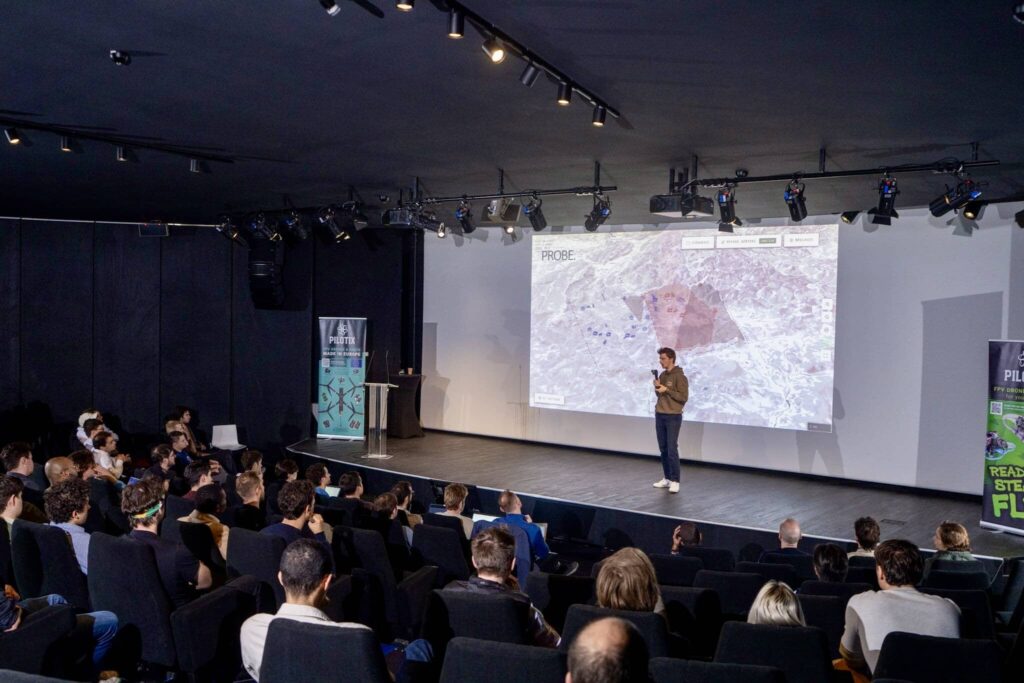
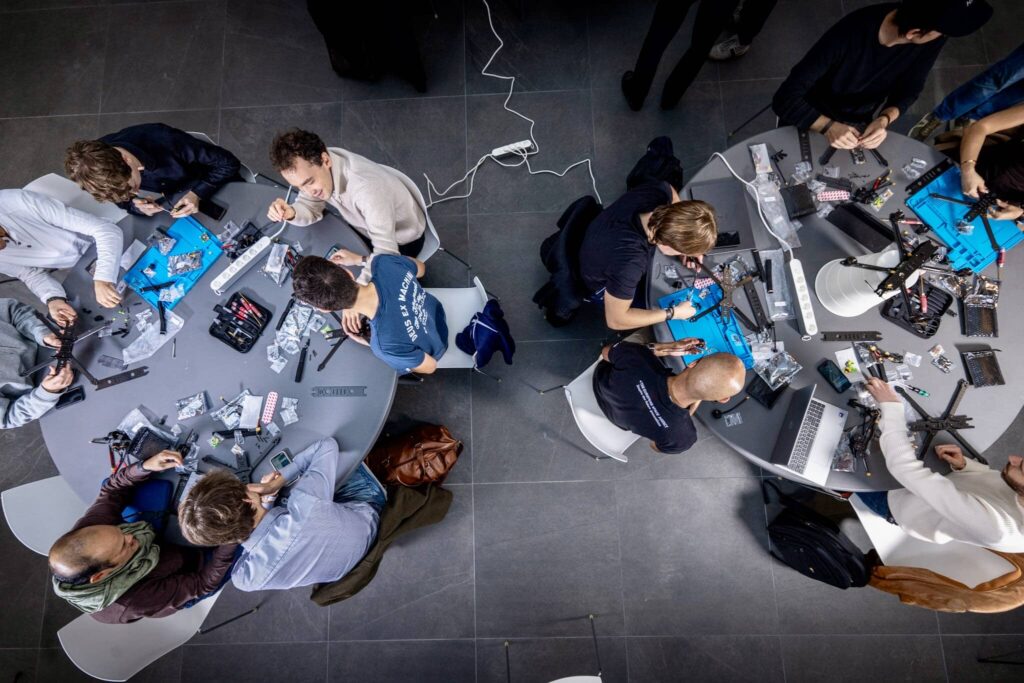
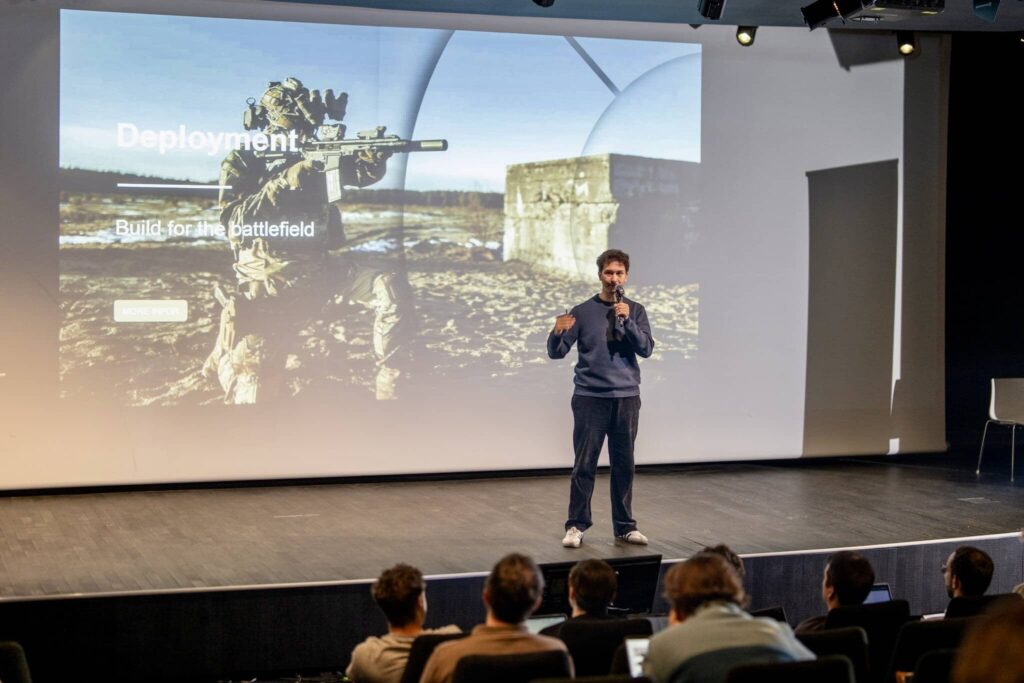
A Fascinating Conversation
In Berlin, Pavlo had honest conversations with representatives of the Bundeswehr, major German miltech companies, and several leading developers. He pointed out something crucial:
Germany’s innovation cycle currently takes 5–7 years. But Ukraine, out of necessity, collapses that cycle into months.
How?
Because every stage of the innovation cycle – from the first idea to deployment – is shaped by people who understand modern warfare. What worked two years ago may already be outdated. In Ukraine, ideas are validated by those with real frontline experience, refined through continuous feedback, and then developed, tested, and improved in actual combat conditions.
Ukraine is the only place in the world where this process moves at wartime speed — and many European militaries are only now realizing how valuable that is.
Pavlo put it simply:
If European developers work with Ukraine from concept to testing, they can deploy new technologies in months – not years.
This is exactly why global defense-tech communities are increasingly looking toward Ukraine for leadership, not just inspiration.
What We Saw in Berlin
According to the organizers, this year’s Berlin event wasn’t just big – it was transformative. Eighty percent of participating teams produced fully functional prototypes in only four days. Many worked in new cross-border groups, combining multiple nationalities, fields, and technical backgrounds.
One especially important observation from the event:
There is now an entire generation of young specialists across Europe who view defense-tech not as a niche sector, but as one of the most critical technological frontiers of our time.
And Ukraine is at the center of it.
Why This Matters
Hackathons aren’t just competitions or tech experiments. They’re pressure cookers where the future of defense is being built. They are where real problems from the battlefield meet real engineers who want to solve them.
Across Europe, there is now a deliberate effort to connect this wave of new defense-tech innovators with combat-tested experience. That’s why large initiatives like European Defense Tech (EDT) are gaining momentum. Their hackathons, workshops, and accelerator programs bring together young engineers, designers, analysts, and military advisors – creating a bridge between fast-moving technical creativity and the real operational needs coming from Ukraine’s front lines.
For Dignitas Ukraine, these events are much more than an opportunity to participate – they are a chance to bring battlefield experience directly into the global innovation cycle, speeding up development that can save lives today, not years from now.
Innovation wins wars.
And Ukraine’s defenders, volunteers, and engineers are proving that every single day.
Dignitas Ukraine extends its sincere gratitude to European Defense Tech for organizing these impactful hackathons and for sharing the photos that captured their energy and purpose. Thank you for creating spaces where ideas become life-saving solutions.
